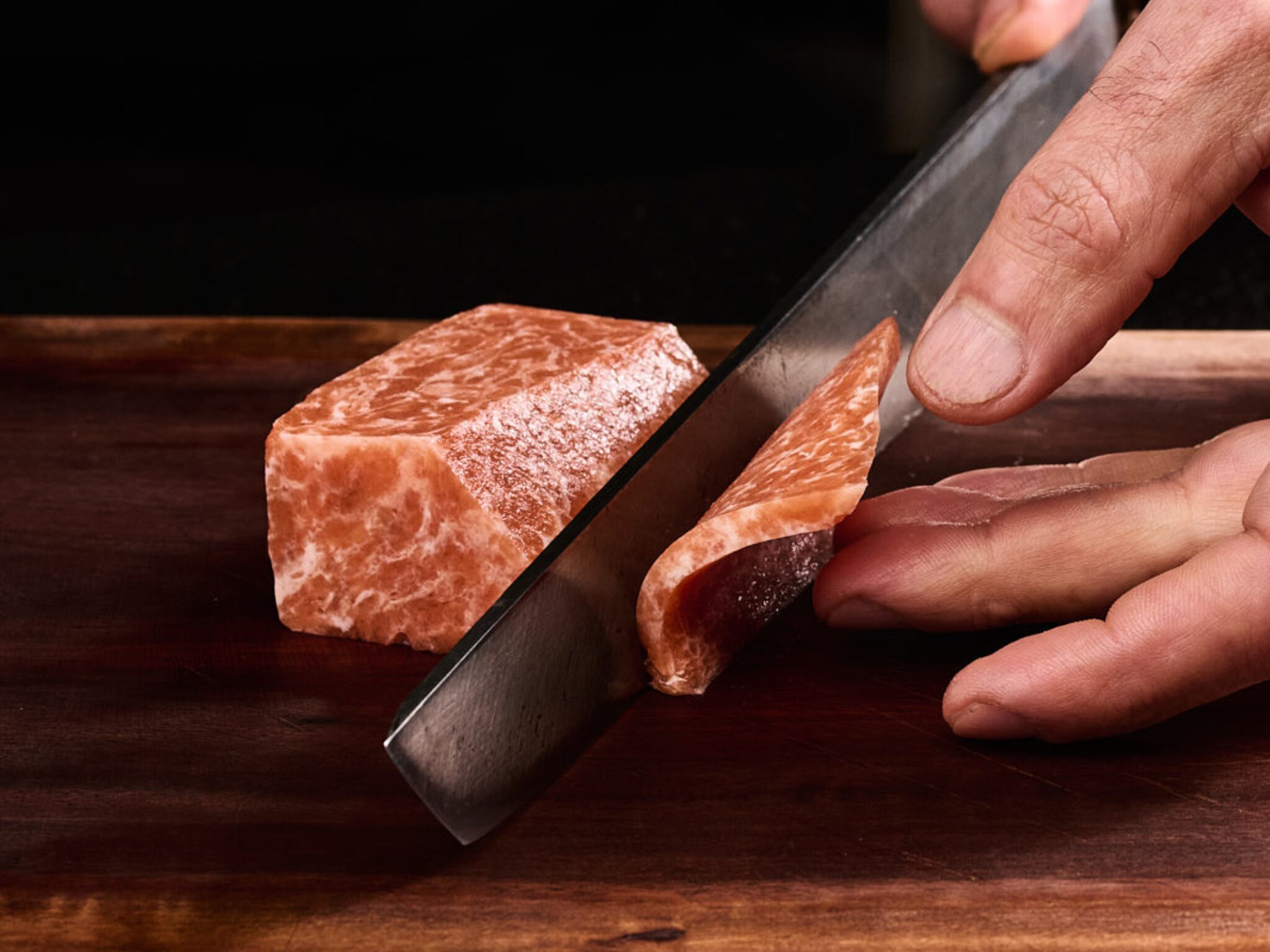Wanda Fish Develops Cultivated Bluefin Tuna Toro Sashimi, Plans to File Regulatory Dossiers in 2025
8 Mins Read
Israeli cultivated seafood startup Wanda Fish has developed hybrid toro sashimi, the highly prized fatty cut of bluefin tuna belly, and plans to apply for regulatory approval next year.
To battle overfishing, extinction threats, ocean pollution, and increasing prices of an already pricey product, Wanda Fish has created cultivated toro sashimi, the fatty underbelly of bluefin tuna known for its buttery, tender characteristics.
Made from cultivated bluefin tuna cells developed with a 3D plant-based matrix, the hybrid product aims to take on the same sensory and nutritional attributes of its wild-sourced counterpart, which can go for as much as $100 for a 1kg serving.
Armed with its patent-pending technology, whole-cut downstream manufacturing process, and a $7M in seed investment in October, Wanda Fish is now preparing to commercialise its cultivated seafood, with regulatory applications planned for 2025. These efforts will be supported by its upcoming Series A round, which will help the startup fine-tune its product and scale up production.
“We are still at lab-scale production. Nevertheless, we are planning our manufacturing process, which will support our goals for this stage,” Wanda Fish CEO Daphna Heffetz, who founded the company in 2021 as a joint venture with The Kitchen FoodTech Hub, tells Green Queen.
Tackling scalability and high costs is also why Heffetz and her team chose to develop a premium seafood filet – bluefin tuna is one of the most expensive seafood products, priced well above land-based livestock. “This would enable us to build a solid business model, start commercial activities without committing to large-scale and expensive operations, and grow with the growth of the category and product sales,” Heffetz explains.
Why Wanda Fish picked bluefin tuna toro
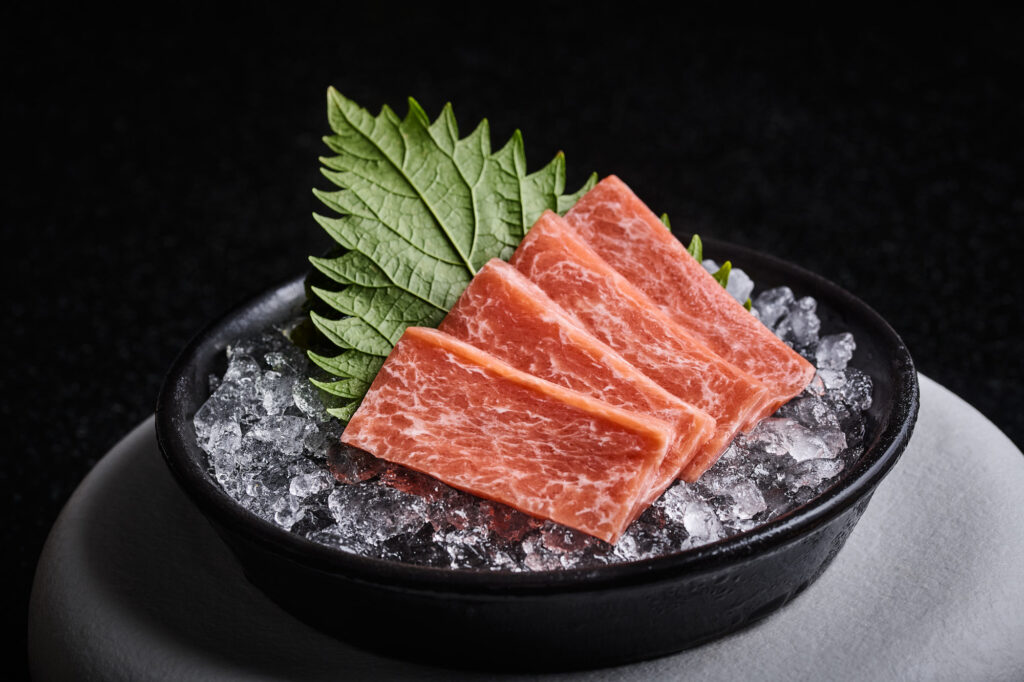
Bluefin tuna is a highly sought-after seafood delicacy, thanks to its velvety texture, buttery flavour and nutritional attributes. But this species represents the ocean’s fastest and longest-distance swimmers, which makes them difficult to raise in captivity, thus commanding a higher price and its use in high-grade sushi and sashimi.
But its supply is limited and extremely variable in quality, and its stocks face declines due to overfishing and illegal, unregulated and unreported fishing. But continued demand is driving the species towards endangerment and has prompted governments to place strict quotas to limit its fishing. Plus, tuna is one of the most polluted fish in the oceans, often contaminated with plastic debris and extremely high levels of heavy metals like mercury.
This is why cultivated seafood producers like BlueNalu (US) and Wanda Fish are hoping to provide a solution to the volatility and unsustainability of bluefin tuna toro. The latter combines the cellular mass of muscle and fat created from tuna cells, which are co-developed with a plant-based matrix.
“An important element of our product, same as wild-caught fillets, consists of muscle, fat and connective tissues,” says Heffetz. “The tuna cell biomass is then mixed with a plant-based matrix to form a whole cut. As the product is aimed to be served raw, same as the wild-caught sashimi, we developed an easy-to-scale and cost-effective technology to create our 3D fillet, which allows us to serve the product raw.”
The fatty part of the whole-cut bluefin tuna provides not just the textural characteristics it’s cherished for, but also essential nutrients like proteins and omega-3 fatty acids. Wanda Fish’s process induces native fat formulation in the tuna cells, with the team focusing on achieving the same level of fat marbling as conventional toro sashimi. The scalability of the platform will allow the company to get closer to price parity and maximise its profit margins for the premium product, according to Heffetz.
“Cultivated bluefin tuna is one of those rare food products that make good business sense,” says Yaron Sfadyah, VP of business development and marketing. “It is in high demand, with limited alternatives that match the taste and texture of the wild fish, and at an ideal price point and distribution model. Alternative protein companies often contend with high manufacturing costs, coupled with the low price of animal-based products. It is a completely different story for cultivated bluefin tuna.”
Going the hybrid meat route
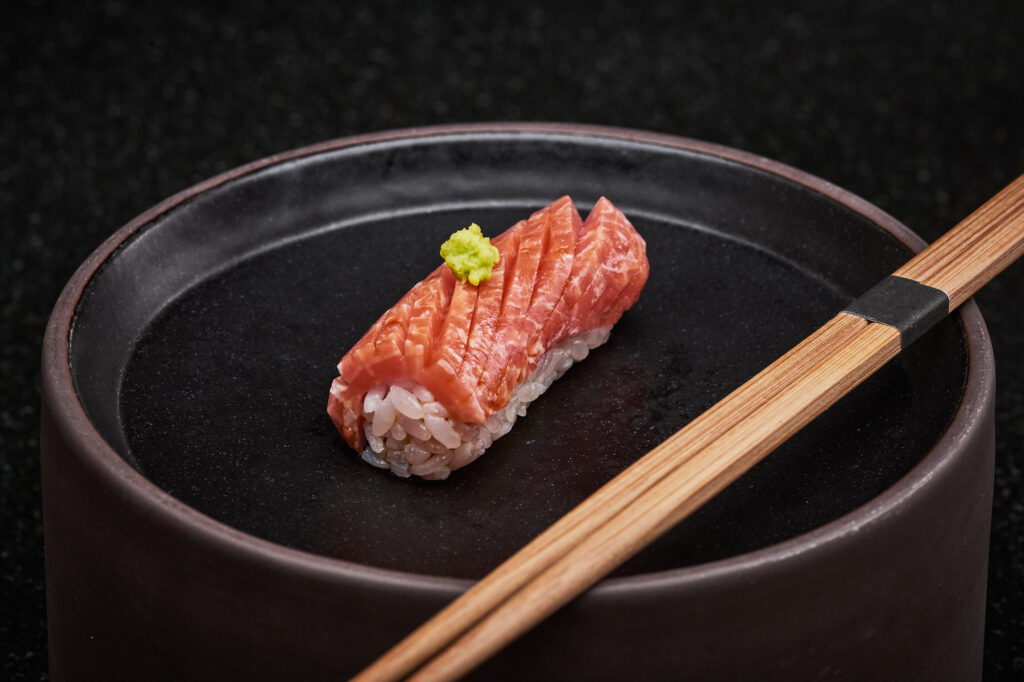
One major way of reducing costs for cultivated meat currently is to simply use less of it in the product. Known as hybrid meat, this approach of blending cultivated cells with plant-based ingredients is favoured by several companies. Most prominently, Eat Just – the world’s first cultivated meat startup to be approved for sale – last week launched its latest Good Meat chicken product for retail in Singapore, which contained just 3% of cultivated chicken.
“It’s no secret that the main challenge the entire cultivated food sector faces is high manufacturing costs at scale. And we don’t have time to spare, as demand for seafood products – specifically bluefin tuna – is constantly rising,” says Heffetz.
“We believe hybrid products that include muscles, fat and connective tissue biomass grown from fish cells will offer a delicious and nutritional product to market and satisfy consumers. We are a food company, basing our food on cutting-edge technology, and as such our mission is to supply a delicious and wholesome product that will also do good for our world – and so the question is: ‘What formulation will result in the best product to satisfy consumers?'” she adds.
While she hasn’t disclosed the exact composition of the product, Heffetz explains that the company aims to have a “significant percentage of cultivated vs plant-based” in its products. “We believe it’s a question of product viability, not science or the ‘race’ to reach a certain figure,” she suggests. “The aim in this first prototype was to develop the right technique of mixing the two components while maintaining the characteristics of the wild-caught. To test that, we did use a significant portion of mixed cultivated cells, but the majority is still plant-based.”
Asia a key focus for Wanda Fish
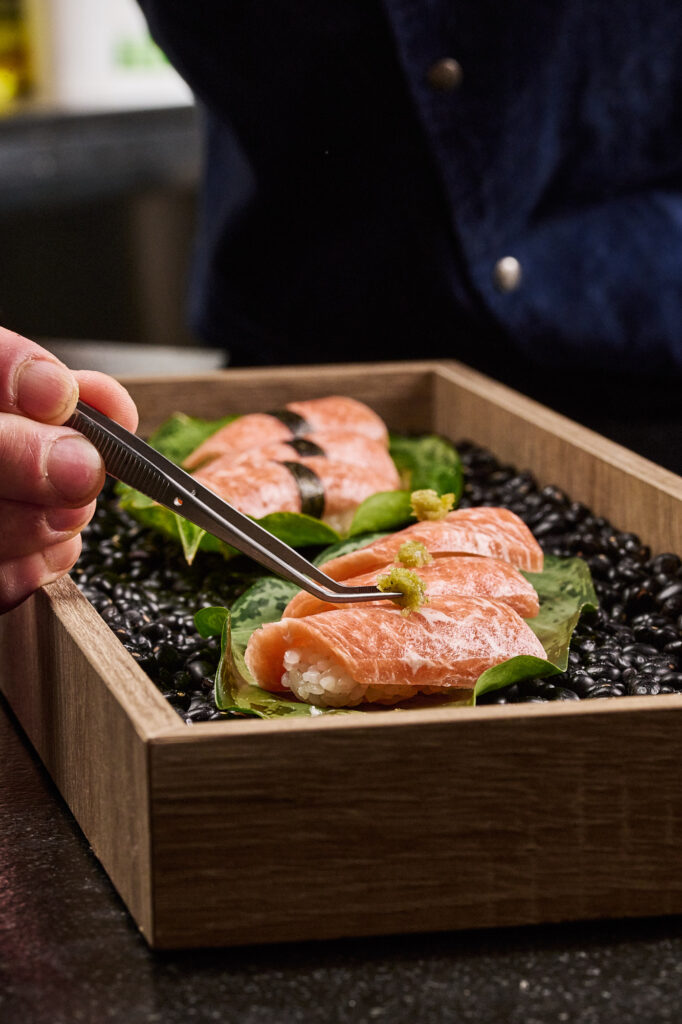
Wanda Fish will introduce the toro at high-end seafood restaurants, with a focus on Japanese cuisine, including sushi and sashimi. “When you look at the ideal distribution channels for cultivated bluefin tuna, premium seafood restaurant makes a lot of sense, which is one of the greatest market attributes of this product, and why we think we stand at a different potential and feasibility than other cultivated food products,” says Heffetz. “Thus, we are planning to start selling in limited quantities in 2026, reaching price parity soon after.”
Its initial target markets are countries with the right combination of consumer acceptance, suitable regulatory frameworks, and government support. Heffetz earmarks Israel, the US and Asia as potential entry points. Within Asia, she pinpoints Singapore, South Korea and Japan as the most promising markets, both from a product perspective and in terms of their openness to novel foods.
Singapore is already known to be a pioneer in novel food regulation – it was the first to allow the sale of cultivated meat, and approved another company earlier this year. South Korea, meanwhile, has established its regulatory process and created a regulation-free zone to accelerate commercialisation – one local company is targeting a launch next year.
And in Japan, there is more clarity now about the regulatory framework, though it has become slightly more complex – this could be a crucial country for Wanda Fish, given it accounts for 80% of global bluefin tuna consumption.
“We need to monitor these developments as we decide which country has a better path forward,” says Heffetz, who is especially excited about Asia. “Just look at the number of alternative seafood products that are being introduced to Asian consumers, many of which are introduced by Asian multinational, giant food companies, whether it is in Japan, Korea, Thailand, or elsewhere,” she points out.
Sailing through financial and legislative pressure
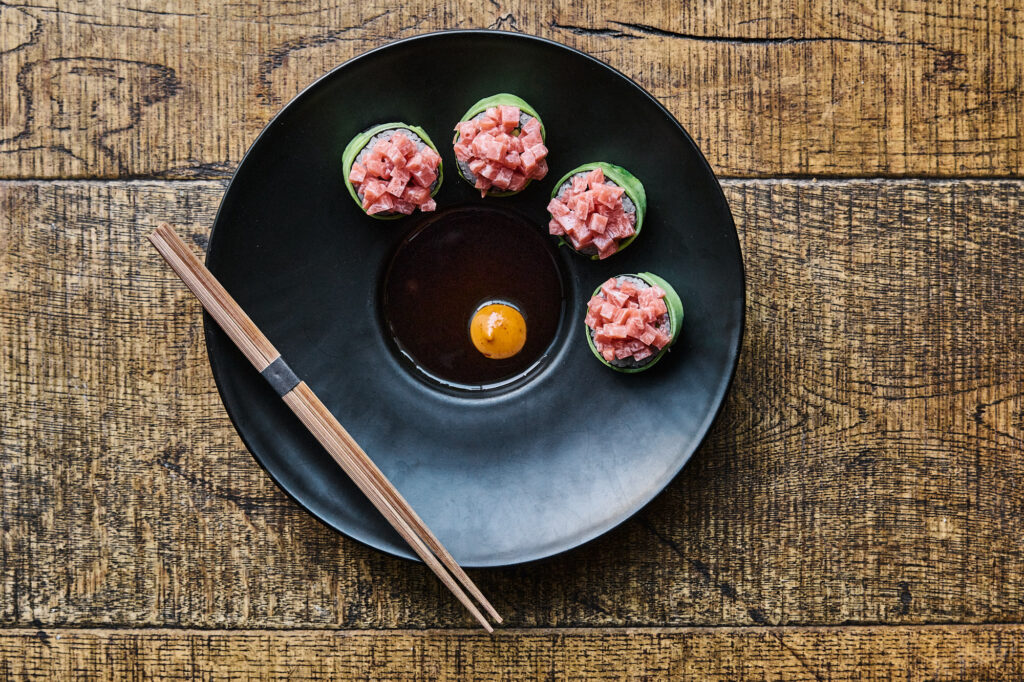
Alternative seafood has been facing its own headwinds recently – earlier this year, Germany’s Ordinary Seafood and San Francisco’s New Wave Foods both ceased operations, citing a bleak funding landscape and market challenges, while Californian cultivated seafood player Finless Foods reportedly initiated a second round of layoffs in less than 12 months.
However, Heffetz remains upbeat. “When we look at the data, the deals and investments that took place in recent years, we actually see that seafood is keeping its pace, or is not as hurting as the alternative meat sector,” she suggests, adding: “The alternative seafood sector is much smaller than the meat sector, and thus its growth potential is huge. This is also why I feel strongly about this field – we have yet to showcase the real potential, and we are encouraged by the level of support and interest we are seeing from companies, CVCs and VCs around the world.”
And speaking of challenges, the cultivated meat sector has been at the centre of legislative action recently. Italy has already banned the production and sale of these products – and this month, the US states of Florida and Alabama have done the same. Several other countries and American states are considering similar bans or restrictions.
Heffetz believes these bans are more reflective of the local political climate than the industry or its potential. “Cultivated food will require additional research and work, and even then, it will take years to challenge the large animal-origin food companies. We can look at plant-based as an interesting case study,” she says.
“At the end of the day, whether we like it or not, our world and our future are at risk, and this is a step to mitigate that risk. As I see it, we are developing another offering to stand side by side with plant-based, animal-based, cultivated, fermentation, and who knows what [else] the future may bring to our plates.”


